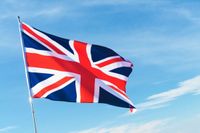
What are the different flags of the United Kingdom?
The flag of the United Kingdom is one of the best known flags in the world.
The United Kingdom has 5 flags, one for each nation:
- England
- Wales
- Scotland
- Northern Ireland
- to which is added the famous Union Jack (or Union Flag).
Besides appearing on many flags of former British colonies (Australia, Fiji, Tuvalu, New Zealand, etc.), the Union Jack is also very fashionable - it can be found on all kinds of merchandise: clothing, dishes, furniture, etc.
advertisement
The flag of England

The English flag is made of a red cross on a white background, it represents the Cross of Saint George (St George's Cross) .
The history of the English flag
Of Palestinian origin, George of Lydda was an officer in the Roman army during the reign of Diocletian. At the beginning of the 4th century, when the emperor demanded the persecution of Christians, he was tortured and put to death.
This flag has been used as national symbol of England - nation of United Kingdom - since the 18th century; but it was also at the time, that of the Republic of Genoa, which then dominated maritime trade in the Mediterranean.
Indeed, in 1190, England began to pay tribute so that its ships could hoist this cross ("Flag of Saint George") on their masts and thus be protected on the trade routes.
It is as a result of this, and thanks to the relationship between England and Saint George, that the latter is designated in 1348: patron saint of England.
This cross of Saint George is also present on other flags, country or city - like Barcelona.
Saint George - National Day of England (St Georges' day) - is celebrated on April 23.
The legend of Saint George
This cross is mainly found during the Crusades and the Middle Ages - but its origin dates back to the 3rd century with the legend of Saint George and the Dragon.
The story describes a saint who allegedly tamed and killed a dragon who demanded human sacrifices. The saint thus saved the princess chosen as the next offering.
The flag of Wales
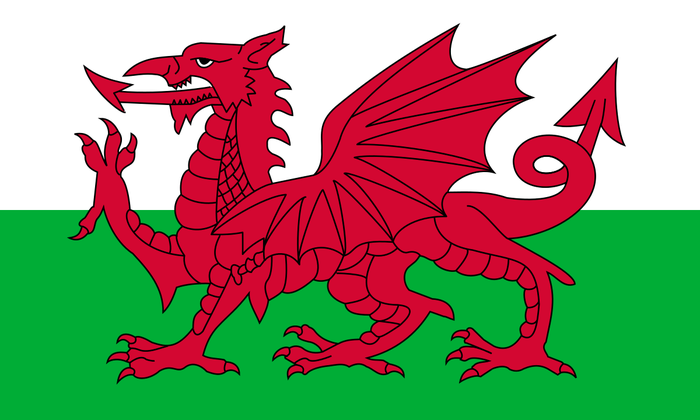
The Welsh flag represents a red dragon on a green and white background - it is also called "Y Draig Goch” ("The red dragon” in Welsh).
The history of the Welsh flag
The colors green and white are those of the House of the Tudor, the royal dynasty that ruled the Kingdom of England between 1485 and 1603.
The red dragon is said to be an emblem inherited from the Roman Empire - but it is also a Welsh symbol, used as a war flag since the 5th century.
Wales was annexed to England in 1282 by Edward I, but the Welsh flag does not appear on the flag of the United Kingdom - as it becomes official flag of Wales only in 1959, after the creation of the Union Jack.
The patron saint of Wales is Saint David, a 6th century Welsh church priest.
The dragon in the Welsh flag has nothing to do with the legend of Saint George and the Dragon!
Saint David (St David's day) is celebrated on March 1.
The legend of the red dragon
Like the English flag, the Welsh flag also has its legend: the story tells about a fight between two dragons - one red and one white - whose cries made people who heard them sterile. The King of Great Britain, Llud, and his brother, Llefelys, dug a hole and filled it with a liquid to intoxicate the dragons. They fell into the trap, were caught and locked up.
The new king, Vortigen, discovered the dragons years later, under his castle. With Merlin's help, he freed them and the dragons ended their struggle. Red emerged victorious and eventually became the symbol of Wales.
The flag of Scotland
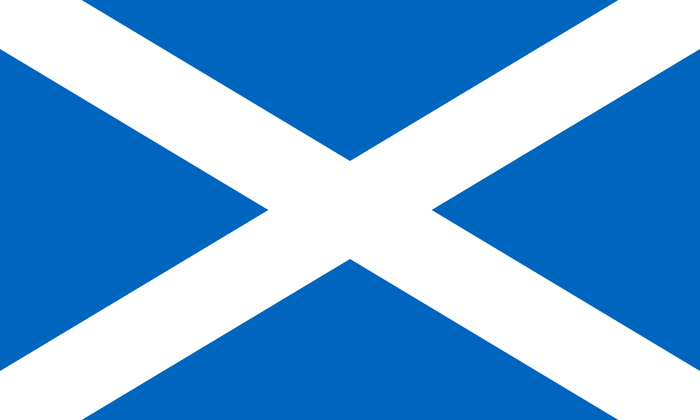
The Scottish flag consists of a white X-shaped cross on a blue background, it is also known as Saltire Cross of Saint Andrew.
Its blue background has long oscillated between light blue and navy blue; It was in 2003 that the Scottish government made cobalt blue (Pantone 300) the official color of the Scottish flag.
The legend of Saint Andrew
This flag has its origins in the legend of the Battle of Athelstaneford (west of Edinburgh), in the 9th century, which pitted Picte king Angus MacFergus against Saxon king Athelstan: clouds would have formed a white cross in the sky - the one on which was martyred Saint Andrew, patron saint of Scotland (one of the twelve disciples of Jesus) - which would have helped the Celts defeat the Saxons.
The history of the Scottish flag
Indeed, historical evidence shows that in 1385, the Scottish Parliament asked soldiers to use this white cross as a mark of distinction on the battlefield.
It was in 1512 that it became the badge of the Scottish flag - replacing the Rampant Lion, emblem of the Scottish kings of the House of Stuart.
The Scottish flag is one of the oldest flags still in use today.
Saint Andrew (St Andrew's day) is celebrated on November 30.
The flag of Northern Ireland
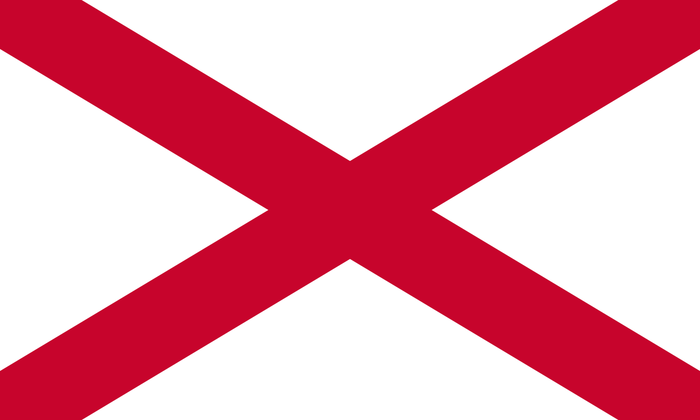
The Northern Irish flag consists of a red X-shaped cross on a white background. It is also the flag of the patron saint of Ireland: Saint Patrick.
The history of the Northern Irish flag
The Saint Patrick's Cross is the oldest among the various Irish flags. It has been associated with the Irish institution since the 16th century: it can be found on the stamps of Trinity College in Dublin, on the coins of several towns in Ireland or on the Duke's coat of arms. by Leinster.
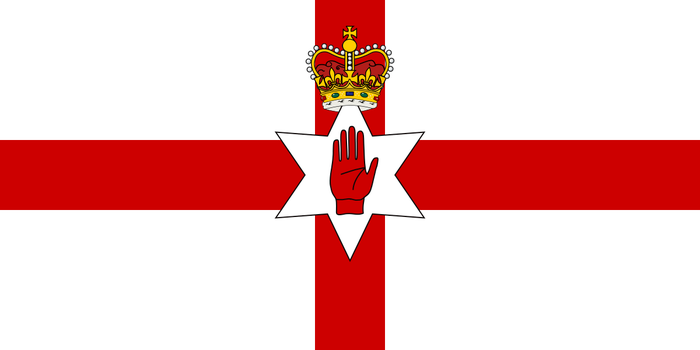
There is another flag of Northern Ireland - which closely resembles the English flag: a six pointed star representing the six counties of Northern Ireland is superimposed on the Cross of Saint George; Within this star is the red hand of Ulster (province of Northern Ireland). Finally, the imperial crown of the United Kingdom caps the star and represents loyalty to the British monarchy.
advertisement
It was the flag of Northern Ireland between 1953 and 1972 and lost its official character with the dissolution of the Northern Irish Parliament.
Saint Patrick's Day (St Patrick's day) is celebrated on March 17th.
The flag of the United Kingdom

It is made up of the crosses of the various patron saints of the country: Saint George for the English, Saint Andrew for the Scots and Saint Patrick for the Northern Irish. It is the combination of the three nations forming the country.
The law of heraldry prohibiting the union of red and blue colors: a white border separates the Cross of Saint George from the blue background.
The story of the Union Jack
On January 1, 1801, an Act of Union was signed between Great Britain and Northern Ireland: the new state took the name of United Kingdom of Great Britain and Northern Ireland.
The official name is therefore "Flag of the United Kingdom of Great Britain and Northern Ireland" - the British call it "The Union Jack".
If the flag of the United Kingdom bears no distinctive sign of Wales, it is because the nation created its flag after the establishment of the Union Jack.
The UK does not have a national holiday per se, but we celebrate the birthday of Queen Elizabeth II on April, 21.
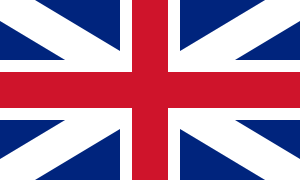
In 1603, the first version of the flag did not have the Cross of Saint Patrick, it was in 1801 that it was added. The British flag was a simple overlay of the English and Scottish flags.
The Queen of England Elizabeth I - called "the virgin queen” - who died in March 1603, had no heir at the time. The King of Scotland, James VI Stuart (James VI) thus became King of England. He was then the first king, James I, of the Kingdom of Great Britain.
In the 17th century, this flag was called the Jack (or Jack's Flag).
Jacques Ier declared: "The Red Cross, commonly called St George's Cross, and the White Cross, commonly called St Andrew's Cross, joined together, according to a form made by our Heralds."